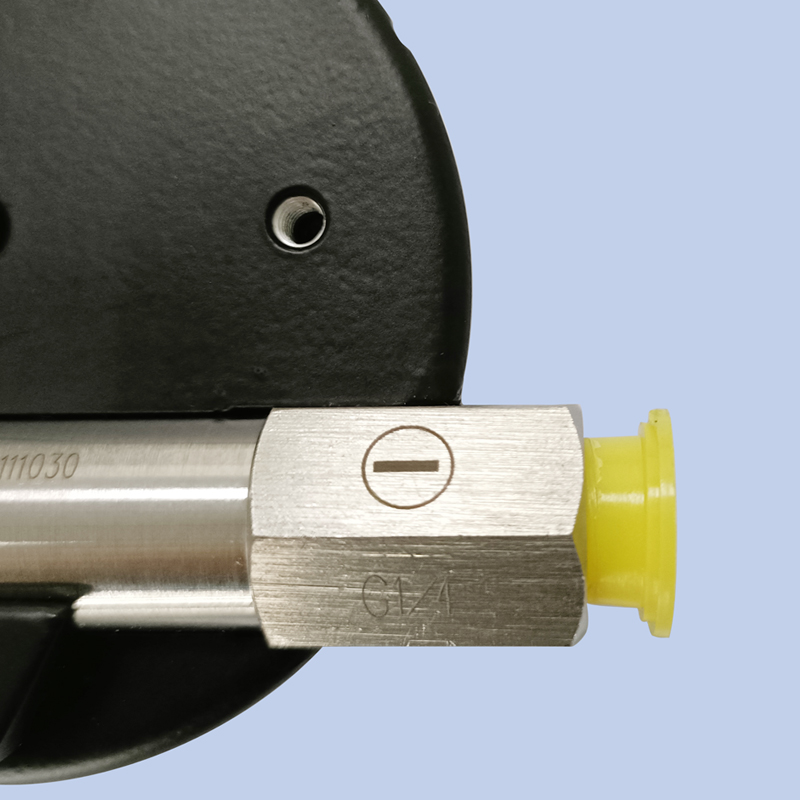
दिसम्बर . 07, 2024 06:24 Back to list
medical oxygen regulator pressure gauge
Understanding Medical Oxygen Regulator Pressure Gauges
Medical oxygen regulators are essential devices in the healthcare sector, specifically designed to ensure the safe and effective delivery of oxygen to patients who require supplemental oxygen therapy. One crucial component of these regulators is the pressure gauge, an instrument that plays a significant role in monitoring the amount of oxygen available in the cylinder and delivering it at an appropriate pressure for patient use.
The Role of Oxygen Regulators
Oxygen regulators are devices that reduce the high pressure of oxygen gas stored in medical cylinders to a manageable and safe level for patient use. Medical oxygen is stored in high-pressure cylinders that can reach pressures exceeding 2000 psi. Without a regulator, delivering oxygen to a patient would be dangerous due to this excessively high pressure. Regulators are designed to reduce this pressure to a much lower and safe level, usually in the range of 0-15 psi, depending on the requirements of the patient.
The Function of Pressure Gauges
The pressure gauge is an integral part of the oxygen regulator. It provides real-time feedback on the amount of pressure in the oxygen cylinder as well as the output pressure being delivered to the patient. Typically, oxygen regulators feature two gauges one that indicates the cylinder pressure (how much oxygen is left in the tank) and another that shows the outlet pressure (the pressure being delivered to the patient).
Cylinder Pressure Measurements
The first gauge you encounter is the cylinder pressure gauge. This gauge provides a direct indication of the remaining oxygen in the cylinder. It is crucial for healthcare professionals to monitor this gauge regularly, as it informs them when the oxygen supply is running low. Knowing when to replace the cylinder is vital for ensuring that patients do not experience interruptions in their oxygen therapy. A gradual decrease in pressure indicates that the cylinder is depleting, while a sudden drop may signal a malfunction or rapid oxygen use.
medical oxygen regulator pressure gauge

Outlet Pressure Monitoring
The second gauge, the outlet pressure gauge, indicates the pressure of the oxygen that is being delivered to the patient. This gauge is essential for ensuring that the patient receives the correct amount of oxygen. Different patients may require varying flow rates based on their medical conditions. Thus, healthcare providers need to carefully adjust the regulator to deliver the appropriate pressure and flow rate as prescribed by a physician.
Importance of Accurate Readings
Accurate pressure readings from these gauges are vital for patient safety and effective treatment. If the cylinder pressure drops too low without replacement, patients may not receive the adequate oxygen they require, leading to severe medical consequences. Conversely, if the outlet pressure is set too high, it can cause damage to the patient's lungs and respiratory system. Regular maintenance and calibration of the oxygen regulator and its pressure gauges are essential to prevent such risks.
Best Practices for Use and Maintenance
Healthcare providers must be trained in how to properly read and interpret the pressure gauges on oxygen regulators. This includes understanding the significance of the readings, recognizing when action is needed, and knowing how to efficiently replace or refill cylinders when necessary. Additionally, regulators should be routinely maintained and inspected for defects or wear to ensure accuracy and functionality.
Conclusion
In summary, medical oxygen regulators and their pressure gauges are fundamental tools in the management of patients requiring oxygen therapy. They not only safeguard against the dangers of high-pressure oxygen delivery but also ensure patients receive the appropriate levels of oxygen necessary for their health. Understanding how to read and interpret these gauges is vital for healthcare professionals and plays an essential role in achieving optimal patient outcomes. Proper use and maintenance of these devices can significantly impact patient safety and efficacy of treatment in clinical settings.
-
High-Precision 5 Valve Manifold Differential Pressure Gauge Suppliers
NewsApr.29,2025
-
High-Precision Diaphragm Vacuum Pressure Gauges Manufacturers & Quotes
NewsApr.29,2025
-
Omega Differential Pressure Gauges High Accuracy & Durability
NewsApr.28,2025
-
Low Pressure Differential Pressure Gauges Precision Solutions & Quotes
NewsApr.28,2025
-
Digital Diaphragm Pressure Gaauge Precision Measurement & OEM Quotes
NewsApr.28,2025
-
Differential Pressure Gauge China Price High-Accuracy & Best Quotes
NewsApr.28,2025
